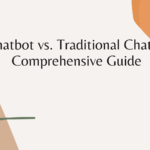Chatbots have emerged as powerful tools for businesses to enhance customer service, streamline operations, and improve overall efficiency. However, if not implemented and managed properly, chatbots can do more harm than good, driving away potential customers. In this SEO-optimized blog post, we will highlight ten common chatbot mistakes that can have a detrimental impact on your customer base. By recognizing and avoiding these errors, you can ensure a positive chatbot experience for your customers and prevent the loss of valuable business opportunities.
Lack of Clear Purpose and Strategy
Failing to Define Clear Objectives
One of the most significant mistakes in chatbot implementation is not establishing clear goals. Without a well-defined purpose and strategy, chatbots may provide inconsistent or irrelevant responses to customer inquiries, leading to frustration and dissatisfaction. It is crucial to identify the specific objectives of your chatbot and align its functionality with your overall business goals.
Ignoring Customer Needs and Preferences
A common mistake is disregarding customer needs and preferences when designing chatbot interactions. Understanding your target audience and tailoring the chatbot’s conversational style and responses accordingly is essential. By ignoring customer expectations, you risk creating a disengaging experience that drives potential customers away.
Insufficient Training and Maintenance
Inadequate Training for Chatbot AI
Chatbots rely on artificial intelligence (AI) algorithms to understand and respond to customer queries. Failing to provide sufficient training to the AI model can result in inaccurate or nonsensical responses. Regularly updating and fine-tuning the chatbot’s AI capabilities is crucial to ensure it maintains a high level of accuracy and relevance.
Neglecting Real-Time Monitoring and Improvement
Chatbot performance should be continually monitored to identify and rectify any issues promptly. Neglecting real-time monitoring can lead to prolonged periods of malfunctioning chatbots, frustrating customers and potentially damaging your brand reputation. Regularly analyze customer interactions, gather feedback, and make necessary improvements to optimize the chatbot’s performance.
Lack of Personalization and Human Touch
Overreliance on Predefined Responses
Relying solely on predefined responses without incorporating personalization can make the chatbot interactions feel robotic and impersonal. Incorporating dynamic and personalized elements, such as customer names or relevant details, can significantly improve the customer experience and foster a sense of engagement.
Failing to Escalate to Human Agents
While chatbots are effective for handling routine queries, they should be programmed to recognize their limitations. Failing to escalate complex or sensitive issues to human agents when necessary can result in frustrated customers who feel unheard or misunderstood. Ensure a seamless transition to human support when the chatbot is unable to provide satisfactory assistance.
Further reading: Dealing with Angry Customers: 5 Easy Steps for Exceptional Customer Service
Frequently Asked Questions
1. Why chatbots are failing your customers?
Chatbots can fail customers for several reasons. One common issue is their inability to provide personalized and empathetic responses, making customers feel unheard and dissatisfied. Additionally, some chatbots lack contextual understanding, leading to repetitive or irrelevant answers. Moreover, technical glitches and a limited scope of responses can frustrate users, further contributing to chatbot failure.
2. What are the negative impacts of chatbots?
While chatbots can streamline certain processes, their negative impacts can be significant. Poorly designed or implemented chatbots may lead to customer frustration and alienation. Customers might experience increased wait times if the chatbot is unable to handle complex queries or redirects them to human agents inefficiently. In some cases, customers might avoid engaging with chatbots altogether, potentially missing out on valuable information or assistance.
3. Why do so many people dislike chatbots?
The dislike for chatbots stems from various factors. One key reason is the lack of human touch and empathy in interactions. Customers often prefer genuine, human-like conversations, and chatbots can fall short of replicating this experience. Additionally, many early chatbot implementations were riddled with errors and inaccuracies, leading to a negative perception of their usefulness. Lastly, some chatbots may appear intrusive, bombarding users with unsolicited messages or irrelevant responses, further fueling their dislike towards them.
Recommended reading: How to Build an Effective Customer Experience Strategy: Key Steps for Success
Conclusion:
Chatbots have the potential to revolutionize customer service, but only when implemented correctly. By avoiding the ten costly mistakes outlined in this blog, you can maximize the effectiveness of your chatbot and retain valuable customers. From establishing clear objectives and aligning with customer preferences to providing ongoing training and personalization, a well-executed chatbot strategy can enhance customer satisfaction, streamline operations, and drive business success.





